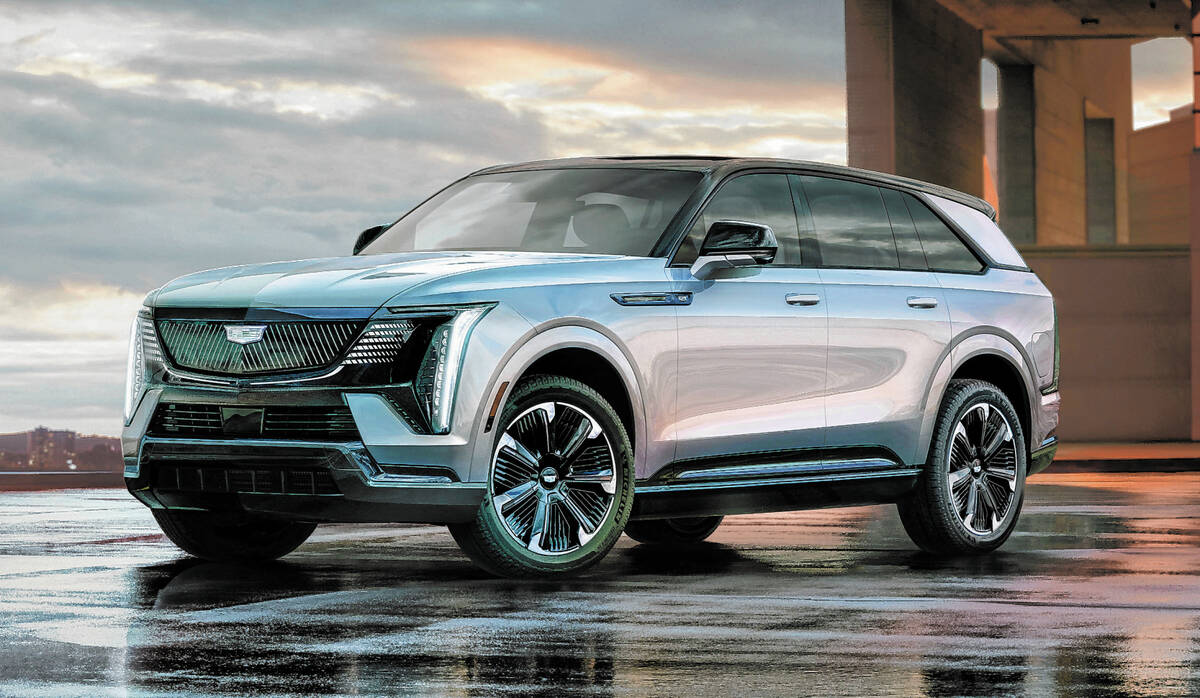For this vehicle and others, visit Findlay Automotive Group’s expansive inventory here.
The announcement that Cadillac will begin delivering the Escalade IQ electric vehicle next summer follows the recently launched 2024 Lyriq utility vehicle and the announcement of the ultra-luxury Celestiq hatchback.
These three are just the beginning for Cadillac, which of course will add other electric sedans and utility vehicles on its path to a fully electrified future.
The full-size, seven-passenger Escalade IQ’s general shape identifies with its gasoline counterpart but differs greatly in the details. From the nonfunctional grille and unique headlights, to the swept-back roofline and L-shaped taillights, the IQ is a particularly stylish vehicle that projects an appropriately upscale aura.
For length, the IQ is between the gasoline-powered Escalade and the longer Escalade ESV, but the IQ has more distance between the front and rear wheels (wheelbase) than both. Despite this, both gasoline models offer a bit more legroom for all three rows of seats. The IQ has less cargo volume, but it makes up for some of that with an “eTrunk” beneath the hood that Cadillac says can transport two sets of golf clubs.
The IQ rides on General Motors’ Ultium platform that supports its various sizes of EVs, from the Chevrolet Equinox right on up to the GMC Hummer EV. Unique to the electric Escalade is an adaptive air suspension that can lower the ride height by 2 inches or raise it by an inch. Standard four-wheel steering, which can be activated at low speeds, significantly reduces turning radius. The available Arrival Mode can move the IQ diagonally into and out of tight parking spaces.
The IQ’s interior is the very definition of modern. The curved glass dashboard includes a 35-inch driver’s display alongside a 25-inch infotainment screen. An 11-inch tablet-style screen is positioned on the floor console. It controls the ventilation and ambient lighting system’s 126 color choices.
The IQ is equipped with front and rear electric motors supported by a 200-kilowatt-hour lithium-ion battery pack. In standard mode, the output is 680 horsepower and 615 pound-feet of torque. In Velocity Max mode, output increases to 750 horsepower and 785 pound-feet; Cadillac says accelerating to 60 mph from rest should flash by in about five seconds.
The IQ’s 8,000-pound tow rating is similar to the gasoline Escalade’s capability.
The IQ is expected to provide about 450 miles of range on a full battery; it will charge at a rate of 37 miles for each hour plugged in to a 240-volt Level 2 home station. The rate increases to 100 miles in 10 minutes when plugged into a 480-volt DC fast-charger, although such stations can be few and far between.
A Regen of Demand system provides braking/stopping force without the driver touching the brake pedal. This generates electricity that’s returned to the battery.
The IQ gets vehicle-to-home bidirectional charging, meaning it can power your home in the event of an outage. It also can be used to provide power to electric tools and other equipment.
Pricing will start at $130,000, including destination charges. The standard features list includes massive 24-inch wheels and Cadillac’s Super Cruise semi-autonomous system that allows for hands-free driving on more than 400,000 miles of roads in the United States and Canada. Among the many operations, it can execute lane changes when passing slower traffic and warns when the driver isn’t paying attention to the road ahead.
Standard active-safety technologies include front and rear emergency braking and pedestrian/cyclist detection/braking. Automatic parking assist can move the IQ into and out of a parallel or perpendicular spot.
Options include second-row captain’s chairs with massaging function, dual headrest speakers with folding tray tables, second-row 12.6-inch screens and dual wireless phone charging. Another upgrade is a 40-speaker AKG Studio Reference audio system (a 19-speaker AKG setup is standard).
Considering the degree of style and performance, the 2025 Cadillac Escalade IQ should appeal to buyers of premium-grade utility vehicles who consider it a greener — at least in terms of fossil fuels — and more stylistic path to luxury-class travel.








